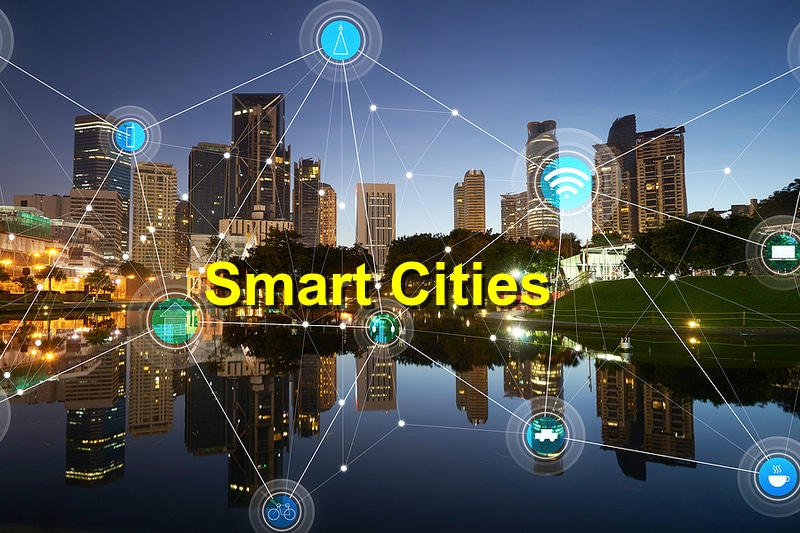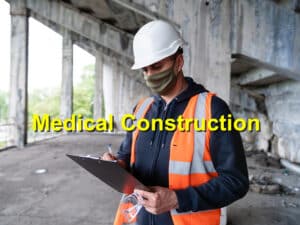The concept of smart cities is revolutionizing urban development, promising more efficient, sustainable, and connected living spaces. Integrating advanced technology into city planning and construction is key to this transformation. Here’s a look at how the future of smart cities and construction is shaping up.
1. Internet of Things (IoT) Integration
The Internet of Things (IoT) is at the heart of smart cities:
- Connected Infrastructure: IoT devices enable real-time monitoring and management of infrastructure such as bridges, roads, and utilities. Sensors can detect issues before they become major problems, ensuring timely maintenance.
- Smart Buildings: Buildings equipped with IoT technology can optimize energy use, improve security, and enhance occupant comfort. For example, smart thermostats and lighting systems can adjust settings based on occupancy and weather conditions.
- Traffic Management: IoT-enabled traffic lights and sensors can reduce congestion by adjusting traffic flow in real-time, improving commute times and reducing emissions.
2. Sustainable Construction
Sustainability is a cornerstone of smart city development:
- Green Building Materials: The use of sustainable materials, such as recycled steel and low-VOC (volatile organic compounds) paints, reduces the environmental impact of construction.
- Energy Efficiency: Smart buildings are designed to minimize energy consumption through the use of advanced insulation, solar panels, and energy-efficient appliances.
- Waste Reduction: Innovative construction methods, such as modular construction and 3D printing, can reduce waste and increase efficiency. These methods allow for precise building, minimizing material waste.
3. Advanced Urban Planning
Smart cities rely on advanced urban planning to optimize space and resources:
- Data-Driven Decisions: Planners use data analytics to make informed decisions about land use, transportation, and public services. This ensures that resources are allocated efficiently and that cities can adapt to changing needs.
- Mixed-Use Developments: Integrating residential, commercial, and recreational spaces within the same area reduces the need for long commutes and promotes a more vibrant community life.
- Public Transportation: Investment in efficient public transportation systems, such as electric buses and high-speed trains, reduces reliance on personal vehicles and lowers carbon emissions.
4. Enhanced Connectivity
Connectivity is a critical component of smart cities:
- 5G Networks: The deployment of 5G networks provides the high-speed connectivity needed for real-time data sharing and communication between devices.
- Smart Grids: Smart grids allow for more efficient energy distribution and management. They can integrate renewable energy sources, such as solar and wind, and ensure a stable power supply.
- Public Wi-Fi: Expanding public Wi-Fi access ensures that all residents can benefit from smart city technologies, promoting digital inclusion.
5. Resilient Infrastructure
Resilience is essential for smart cities to withstand and recover from disasters:
- Disaster Preparedness: Smart cities use technology to enhance disaster preparedness and response. For example, early warning systems can alert residents to natural disasters, allowing for timely evacuations.
- Robust Construction: Buildings and infrastructure are designed to withstand extreme weather events and other hazards. This includes flood-resistant designs and earthquake-proof structures.
- Resource Management: Smart water and energy management systems ensure that resources are conserved and efficiently distributed during crises.
6. Citizen Engagement
Smart cities prioritize citizen engagement and participation:
- E-Government Services: Digital platforms allow residents to access government services online, from paying bills to reporting issues. This improves efficiency and accessibility.
- Feedback Mechanisms: Mobile apps and online portals enable residents to provide feedback on city services and participate in decision-making processes.
- Community Programs: Smart cities often include programs that encourage community involvement in sustainability initiatives, such as recycling programs and urban gardening.
Conclusion
The future of smart cities and construction is bright, with technology and innovation driving transformative changes in urban development. IoT integration, sustainable construction practices, advanced urban planning, enhanced connectivity, resilient infrastructure, and citizen engagement are key elements shaping the cities of tomorrow. By embracing these advancements, smart cities can create more efficient, sustainable, and connected environments that enhance the quality of life for all residents. As we move forward, continued investment in technology and innovation will be crucial in realizing the full potential of smart cities and sustainable construction.




